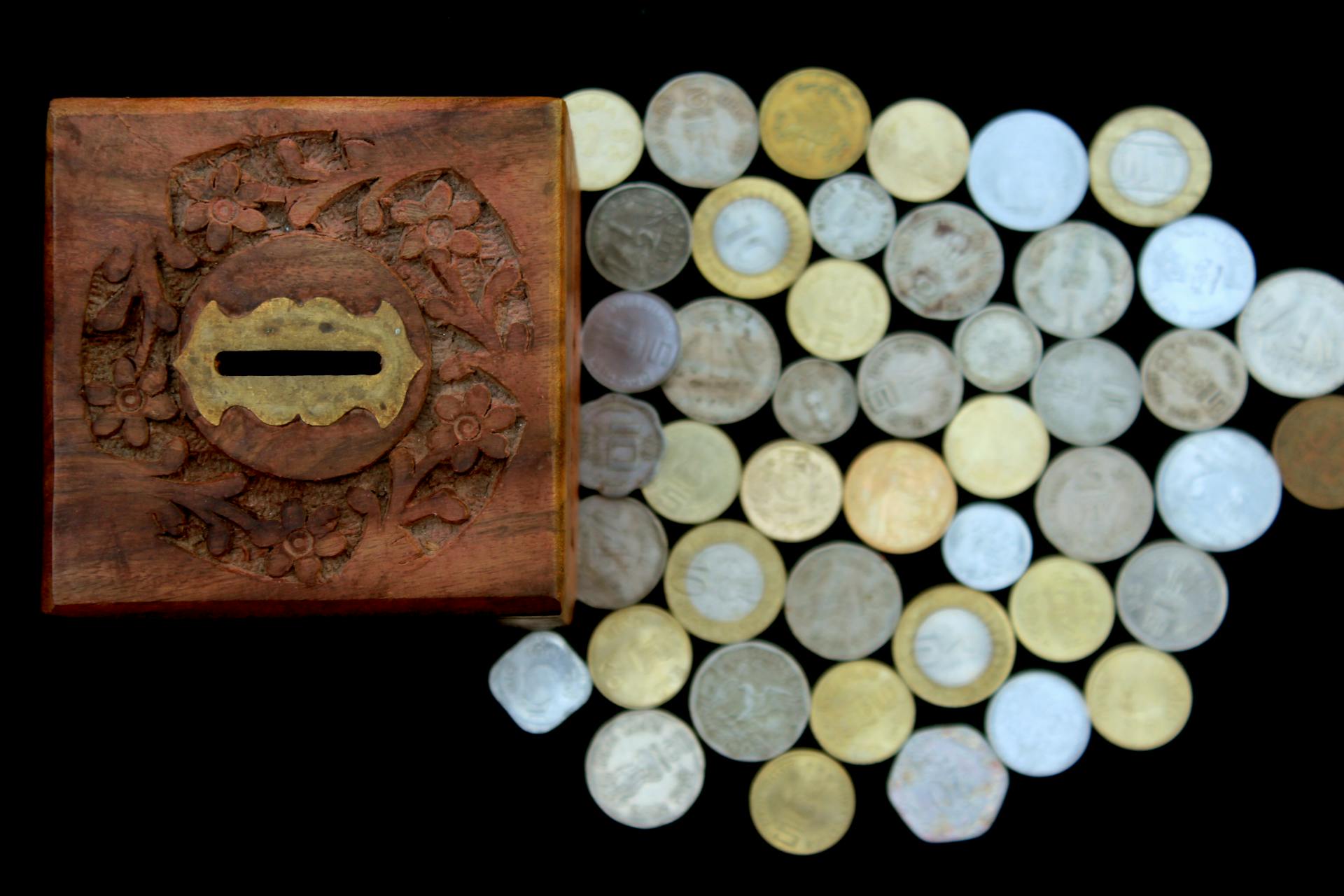
A correspondent account is a type of bank account that allows a financial institution to provide services to another bank in a foreign country.
To open a correspondent account, a bank must have a correspondent banking relationship with the foreign bank, which involves a formal agreement and due diligence process.
Correspondent accounts can be used for various purposes, including facilitating international transactions, such as wire transfers and trade finance.
In order to maintain a correspondent account, banks must comply with anti-money laundering (AML) and know-your-customer (KYC) regulations, which involve verifying the identity of customers and monitoring transactions for suspicious activity.
For your interest: Venmo Business Transactions
Correspondent Account
A correspondent account is an account established by a banking institution to receive deposits from, make payments on behalf of, or handle other financial transactions for another financial institution.
Correspondent accounts are typically established through bilateral agreements between the two banks. This means that a bank will require correspondent accounts for holding currencies outside of jurisdictions where it has a branch or affiliate.
If this caught your attention, see: Correspondent Bank for International Wire Transfer
Most central bank settlement systems do not register deposits or transfer funds to banks not doing business in their countries, which is why banks need correspondent accounts to hold foreign currencies.
A bank will often require correspondent accounts for holding currencies in countries where it doesn't have a branch or affiliate. This is because the actual funds held in any foreign currency account are held in the bank's correspondent account in that currency's home country.
For example, HSBC receives US dollars at its affiliate, HSBC Bank USA, while DBS Bank Singapore receives US dollars at JPMorgan Chase.
Correspondent accounts are also used to facilitate international transactions, such as sending payments to banks overseas.
See what others are reading: Russian Foreign Currency Reserves
Regulations and Compliance
Correspondent accounts are subject to strict regulations to prevent money laundering and terrorist financing.
The Bank Secrecy Act (BSA) requires financial institutions to report suspicious activity and maintain records of correspondent accounts.
In the United States, the Office of Foreign Assets Control (OFAC) regulates correspondent accounts and enforces economic sanctions against certain countries and entities.
The Financial Crimes Enforcement Network (FinCEN) also oversees correspondent accounts and requires financial institutions to file reports on cash transactions exceeding $10,000.
Expand your knowledge: I M B Bank Share Price Today
AML Programs
AML Programs are designed to detect and prevent money laundering and terrorist financing. They are a crucial aspect of financial institutions' compliance with anti-money laundering (AML) regulations.
The Bank Secrecy Act (BSA) requires financial institutions to implement AML programs, which must include policies and procedures for customer due diligence, suspicious activity reporting, and ongoing monitoring.
Financial institutions must also appoint an AML compliance officer to oversee their AML program and ensure it is effective. This officer is responsible for implementing and enforcing the program's policies and procedures.
In addition to these requirements, the USA PATRIOT Act requires financial institutions to verify the identity of their customers and maintain records of their transactions. This includes collecting and verifying customer information, such as name, address, and date of birth.
The Financial Crimes Enforcement Network (FinCEN) regulates AML programs and provides guidance on their implementation. FinCEN's regulations require financial institutions to file Suspicious Activity Reports (SARs) when they suspect a customer of engaging in money laundering or terrorist financing.
Financial institutions must also have a system in place to monitor customer transactions and identify potential suspicious activity. This can include using technology, such as machine learning algorithms, to analyze customer data and identify patterns of suspicious activity.
Consider reading: E S a Payments
OFAC Settlements

Swedbank Latvia AS agreed to pay $3,430,900 to settle its potential civil liability for 386 "apparent" violations of OFAC sanctions involving Crimea.
This settlement amount reflects OFAC's determination that Swedbank Latvia's conduct was "non-egregious" – but not voluntarily self-disclosed.
OFAC can learn of potential sanctions violations through other financial institutions, as seen in the Swedbank Latvia case.
Swedbank Latvia's alleged conduct involved allowing a client to initiate payments from Crimea through an e-banking platform that ultimately were processed by a U.S. correspondent bank.
The enforcement action highlights the risks inherent in providing correspondent bank services to foreign banks.
Good communication between U.S. and foreign banks is essential to prevent sanctions violations.
A financial institution's failure to integrate customer data into a sanctions compliance program can lead to non-compliance issues.
Swedbank Latvia was previously ordered to pay a record 4 billion Swedish Krona (approximately $38 million) in anti-money laundering related penalties in 2020.
Curious to learn more? Check out: Wells Fargo Active Cash Card Foreign Transaction Fee
How it Works
A correspondent account is essentially a special type of bank account that allows a non-US bank to access the US financial system.
The account is held in the name of the non-US bank, but it's managed by a US bank that acts as the correspondent bank.
The correspondent bank provides the necessary services to facilitate international transactions, such as clearing and settling payments.
This means that the non-US bank can use the correspondent account to receive and send payments in US dollars, as well as access other banking services.
The correspondent bank typically charges fees for its services, which can include a maintenance fee, a transaction fee, and a conversion fee.
These fees can add up quickly, so it's essential to understand the costs involved before opening a correspondent account.
Readers also liked: Usbank Correspondent
Examples and Fees
Correspondent bank fees can vary widely, ranging from $25 to $75 on top of transfer fees and exchange rate markups.
In some cases, these fees can be declared upfront by your bank, but it's not always possible to know the exact amount. This can lead to unexpected costs and a reduced payout for the recipient.
Correspondent banks typically deduct their fees from the payment before passing it on to the recipient bank's vostro account.
On a similar theme: Define Correspondent Banking
Chase International Transfer Fees

Chase International Transfer Fees can be a bit steep, with fees ranging from $15 to $75 or more, depending on the transfer amount and the recipient's country.
The fees are non-negotiable, so it's essential to factor them into your transfer plan.
See what others are reading: Bnym I S Trust Co
Wells Fargo International Wire Transfer Fees
Wells Fargo international wire transfer fees can be a bit steep, with a fee ranging from $15 to $45 for outgoing wire transfers, depending on the location and type of transfer.
If you're sending a wire transfer to or from certain countries, you might be able to avoid some of these fees. For example, wire transfers to or from Canada are free.
The fees for receiving international wire transfers at Wells Fargo are generally lower, with a fee of $15 for incoming wire transfers from outside the US.
Keep in mind that these fees are on top of any exchange rate fees that may apply.
International Transfer Fees and Limits
Correspondent bank fees can be a real surprise, ranging from $25 to $75, on top of the transfer fee and exchange rate markup you've already paid.
These fees vary widely depending on the destination country and the relationship between your bank and its preferred partners.
Correspondent bank fees can eat into the amount your recipient gets, making your transfer cost more than you planned.
Wise is a great alternative that cuts out intermediary costs and speeds up the process, making it cheaper and faster than traditional banks like Chase and Wells Fargo.
Wise uses a network of local bank accounts to make payments, eliminating the need for correspondent banks and their fees.
With Wise, you can transfer funds in USD to a local US account, and then pay out the equivalent amount from a local bank account in the destination country, without any money crossing borders.
This means no hidden fees, no exchange rate markups, and a transparent, low charge for the transaction.
You can save significantly with Wise compared to using your normal bank, like Chase or Wells Fargo, for international wire transfers.
Readers also liked: Money Transfer Wise and Paypal
Related Concepts

A correspondent account is often referred to as a nostro or vostro account.
Bilateral agreements between banks are necessary to establish a correspondent account.
Correspondent accounts are typically used by foreign banks that need to pay and receive domestic currency.
Most central bank settlement systems do not register deposits or transfer funds to banks not doing business in their countries.
Banks often require correspondent accounts for holding currencies outside of their own jurisdictions.
HSBC receives US dollars at its affiliate, HSBC Bank USA, for example.
Balances in a foreign currency account are usually held with a correspondent account at a bank's branch or affiliate in the foreign country, or at another institution.
DBS Bank Singapore receives US dollars at JPMorgan Chase, showing how correspondent accounts work across different banks.
If this caught your attention, see: How Often Do You Get Bank Statements
Frequently Asked Questions
What is an example of a correspondent bank?
A correspondent bank is a bank that facilitates international transactions on behalf of another bank, enabling cross-border money transfers. This is often the case when a local bank in one country doesn't have a presence in another country.
Sources
- https://en.wikipedia.org/wiki/Correspondent_account
- https://www.moneylaunderingnews.com/category/correspondent-bank-accounts/
- https://www.frbservices.org/financial-services/accounting/service-setup/respondent-correspondent.html
- https://www.fatf-gafi.org/en/publications/Fatfrecommendations/Correspondent-banking-services.html
- https://wise.com/us/blog/what-is-a-correspondent-bank
Featured Images: pexels.com


